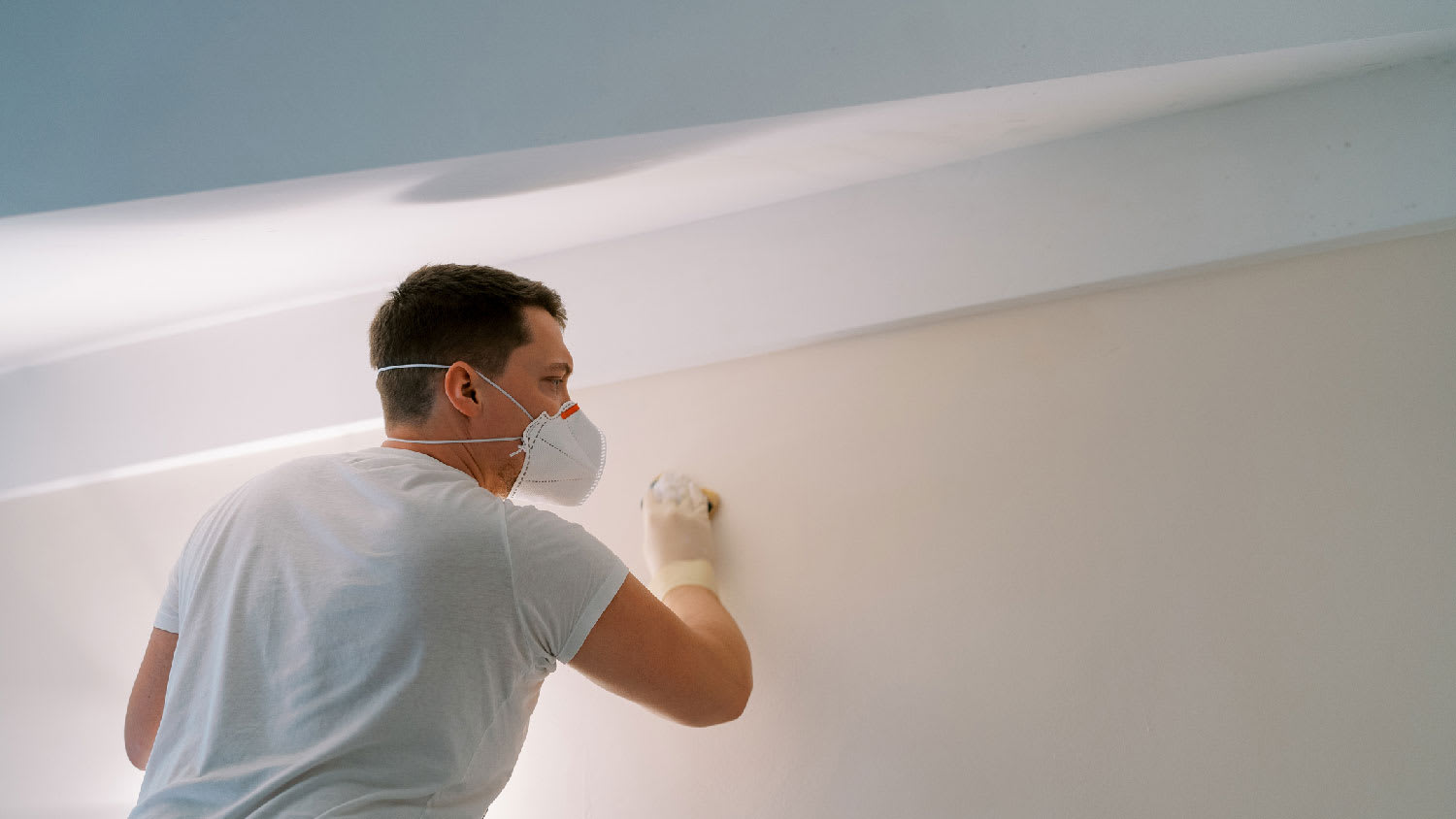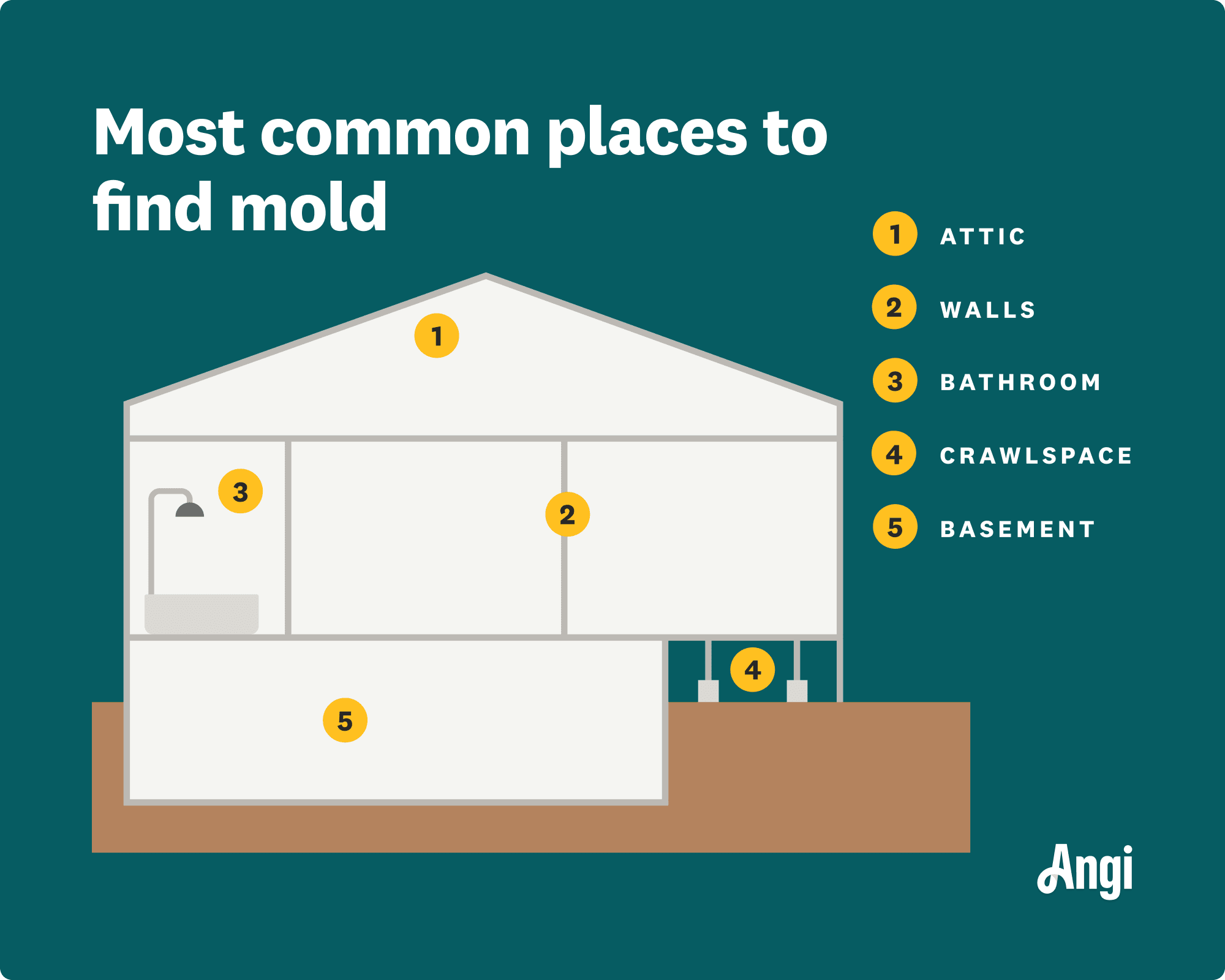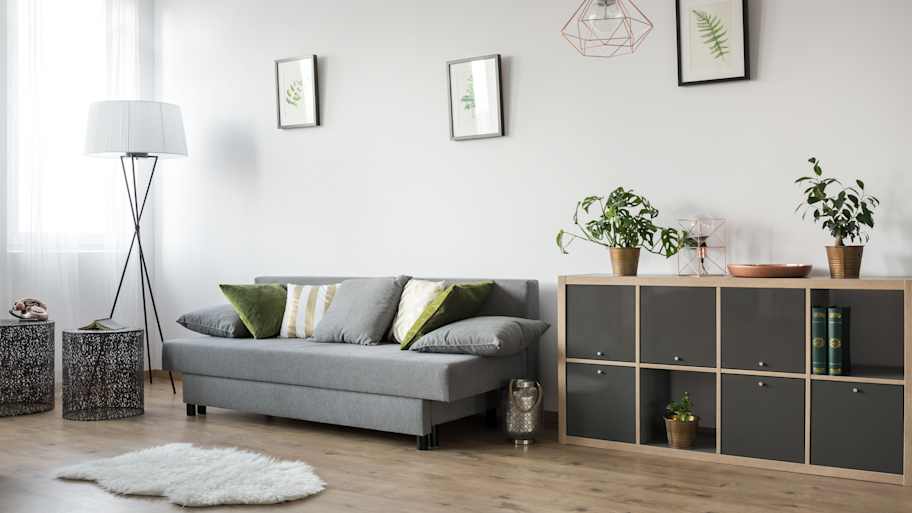
The cost of a mold inspection might seem high, but it’s one of the best investments you can make for your health and home. Read on to learn cost-saving tips.
Mold remediation in Charlotte costs $2,382 on average, but it can cost between $1,103 and $3,821, depending on location, type, and size of infestation.


Mold growth is common in Charlotte homes due to the region's humid climate.
The mold’s location, infestation size, and type are the primary factors that affect mold remediation costs in Charlotte.
Mold infestation can decrease a home’s value by 20% to 37%, which is why it’s essential to take immediate remediation action.
Unfortunately, homes in Charlotte are at high risk for mold growth due to the region’s year-round humid climate. The average mold remediation cost in Charlotte is $2,382, but it can range from $1,103 to $3,821. This guide will cover all the factors that will determine the cost of your Charlotte mold remediation service so you can properly budget for it.
The type, location, and size of the mold infestation are the primary factors that determine the cost of mold remediation in Charlotte. For a small, easy-to-access infestation,it can cost as low as $283, while a severe infestation can cost as high as $7,950 or more.

It costs more to remove mold from certain areas of your home than others. For instance, mold growth in hard-to-reach areas, like in your HVAC system or drywall, can require more time and materials to remove than mold in very accessible areas, driving up costs.
| Location | Average Remediation Cost |
|---|---|
| Attic | $500–$5,000 |
| Basement | $500–$3,000 |
| Crawl space | $500–$2,000 |
| Wall | $1,000–$20,000 |
| HVAC systems | $2,000–$10,000 |
| Bathroom | $500–$1,000 |
| Whole house | $10,000–$30,000 |
Most mold removal professionals charge $10 to $25 per square foot. So, if you're removing mold from a 100-square-foot area, you can expect to pay around $1,000 to $2,500. But factors like where the growth is and the mold type can affect how much it costs to remove it.
The average cost for a mold inspection in Charlotte is around $520, but it can range from $245 to $835 or more. Mold testing is key to determining whether you have the presence of mold in your home, plus the extent of the infestation. You’ll need to hire a mold inspector to test surface samples in your home before moving forward with remediation.
Regardless of how it affects remediation costs, you need to know which type of mold you have in your home for your safety. That said, if a mold test reveals the presence of black mold, your mold remediation pro will likely charge more to remove it based on the additional cost of protective equipment.
| Type of Mold | Description |
|---|---|
| Alternaria | A common mold found outside in spring and summer, it primarily attacks plants. |
| Aspergillus | White fuzz that turns black over time, but it can also be brown, yellow, and green. It can cause respiratory illness and requires immediate remediation. |
| Aureobasidium | Grows on painted surfaces and behind wallpaper. It’s often pink and causes allergies. |
| Chaetomium | Extremely toxic and can cause brain infections and various cancers. A white fuzz that turns to blue or green. Requires immediate professional removal. |
| Cladosporium | Commonly found in basements and HVAC systems. It can cause mild allergy symptoms. |
| Fusarium | One of the most toxic molds; requires professional removal once discovered. Often caused by water leaks, it is commonly found in walls and floors. |
| Penicillium | Blue-green and grows in areas of elevated moisture where water damage has occurred. It can be very dangerous. |
| Serpula lacrymans | Causes severe damage to wood and spreads fast. Unfortunately, this mold is usually found after it has spread widely. |
| Stachybotrys chartarum (black mold) | Extremely dangerous, not to mention fast-spreading. Requires immediate removal by a professional. |
| Trichoderma | Grows rapidly in wood, plants, and soil. Commonly found in HVAC systems and not as widely discovered as others in this list. |
| Ulocladium | A dark-colored mold found near windows and in kitchens and basements. Looks like black mold, but it isn’t as toxic to humans. Nevertheless, it still requires removal. |
If left untreated, mold can damage your drywall, carpeting, and flooring. Replacing or repairing your walls or floors will add costs to the removal.
Here are some cost estimates for different types of mold damage repairs in Charlotte, NC:
| Repair Type | Average Cost |
|---|---|
| Drywall | $550–$2,000 |
| Carpet | $180–$400 |
| Hardwood Flooring | $200–$1,200 |
The Environmental Protection Agency (EPA) recommends only removing mold yourself if it covers less than 10 square feet. Otherwise, it's best to call a local mold removal service. Even if the mold looks like it only covers a small area, you should always call a pro to inspect it.
The price to hire a mold remediation professional in Charlotte depends on the scope of the job. For instance, removing mold from HVAC systems and interior walls is more costly than from easier-to-access areas.
Once the mold remediation crew is done, you’re likely to be left with several materials to replace, including drywall, carpet, and wood. Some of these repairs may be DIY or handled by the remediation technicians, but others require the help of an expert.
The city of Charlotte requires a building permit if extensive repairs to areas such as the HVAC system or any electrical changes are needed. Expect to arrange repair work with an experienced contractor to get your home looking its best.
Hire a drywall contractor to replace drywall: $1,000–$3,200
Hire a carpet installer to replace carpet: $3–$11 per square foot
Hire a plumber to fix leaks: $45–$200 per hour
Mold is a common problem in homes in Charlotte because the region's humid climate creates ideal conditions for it to thrive. Mold remediation can prevent the value of your home from declining. In fact, houses that have a mold infestation drop 20% to 37% in value, and over half of potential buyers will walk away from even bidding on your home. It’s essential to eradicate mold as soon as possible and prevent it from coming back to keep your Charlotte home’s value intact.
Home is the most important place on earth, which is why Angi has helped more than 150 million homeowners transform their houses into homes they adore. To help homeowners with their next project, Angi provides readers with the most accurate cost data and upholds strict editorial standards. We survey real Angi customers about their project costs to develop the pricing data you see, so you can make the best decisions for you and your home. We pair this data with research from reputable sources, including the U.S. Bureau of Labor Statistics, academic journals, market studies, and interviews with industry experts—all to ensure our prices reflect real-world projects.
Want to help us improve our cost data? Send us a recent project quote to [email protected]. Quotes and personal information will not be shared publicly.
From average costs to expert advice, get all the answers you need to get your job done.

The cost of a mold inspection might seem high, but it’s one of the best investments you can make for your health and home. Read on to learn cost-saving tips.

There's an excellent reason why you should avoid going with the same company for mold testing and mold remediation. Learn why different companies should handle these tasks.

Mold infestations can negatively impact your health and home resale value. Read on to determine if mold will create issues for your home and how to resolve them.

If you suspect you have mold under your vinyl flooring, you will need to work with a professional to replace it.

Worried about mold behind your drywall? Learn how to spot the signs and when it’s time to call in a professional, plus how to prevent it in the future.

When it comes to black mold vs wood rot, one causes a much bigger threat to your family. Keep reading to learn which.